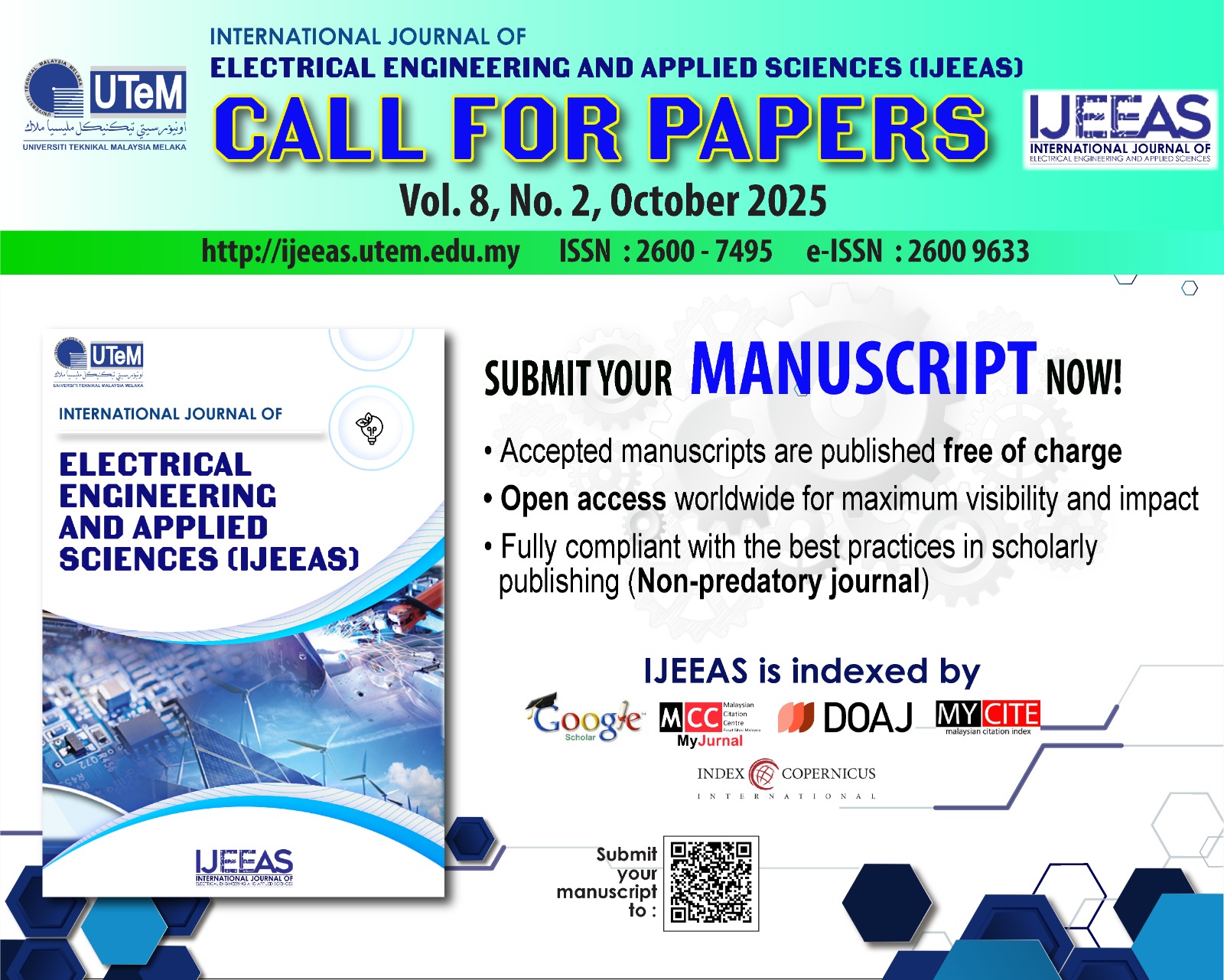Rule-Based Control Application on Multimode Cricket Bowling Machine
Abstract
This paper presents the application of rule-based control on the multimode cricket bowling machine to create varying bowling deliveries. Rule-based control on the machine allows an easier imitation of the different deliveries utilized by the real cricket bowlers. This was achieved by studying the kinematic properties of the cricket bowling and designing the rule base to achieve the required trajectory. The corresponding rules had three inputs namely ball speed, side spin, and length whereas the outputs were motor rotational speed, motor rotational direction, and motor base orientation. The investigated rules were divided into two major groups; without-ball spin rules and with-ball spin rules. The first group was physically experimented and compared with simulation results via the ball’s trajectory mathematical model whereas the later was only simulated. Both results showed the effect of the rules on the ball trajectories where there was good coherence with the kinematic data obtained from the bowling deliveries. However, the effect of the ball spin rules was relatively small in terms of magnitude due to the lower ball rotational velocity. Thus, improving the machine’s capability by applying higher ball rotational velocity would augment the effect of the rules.
Downloads
Downloads
Published
How to Cite
Issue
Section
License
Authors who publish with this journal agree to the following terms:
- Authors retain copyright and grant the journal right of first publication with the work simultaneously licensed under a Creative Commons Attribution License that allows others to share the work with an acknowledgement of the work's authorship and initial publication in this journal.
- Authors are able to enter into separate, additional contractual arrangements for the non-exclusive distribution of the journal's published version of the work (e.g., post it to an institutional repository or publish it in a book), with an acknowledgement of its initial publication in this journal.
- Authors are permitted and encouraged to post their work online (e.g., in institutional repositories or on their website) prior to and during the submission process, as it can lead to productive exchanges, as well as earlier and greater citation of published work (See The Effect of Open Access).







